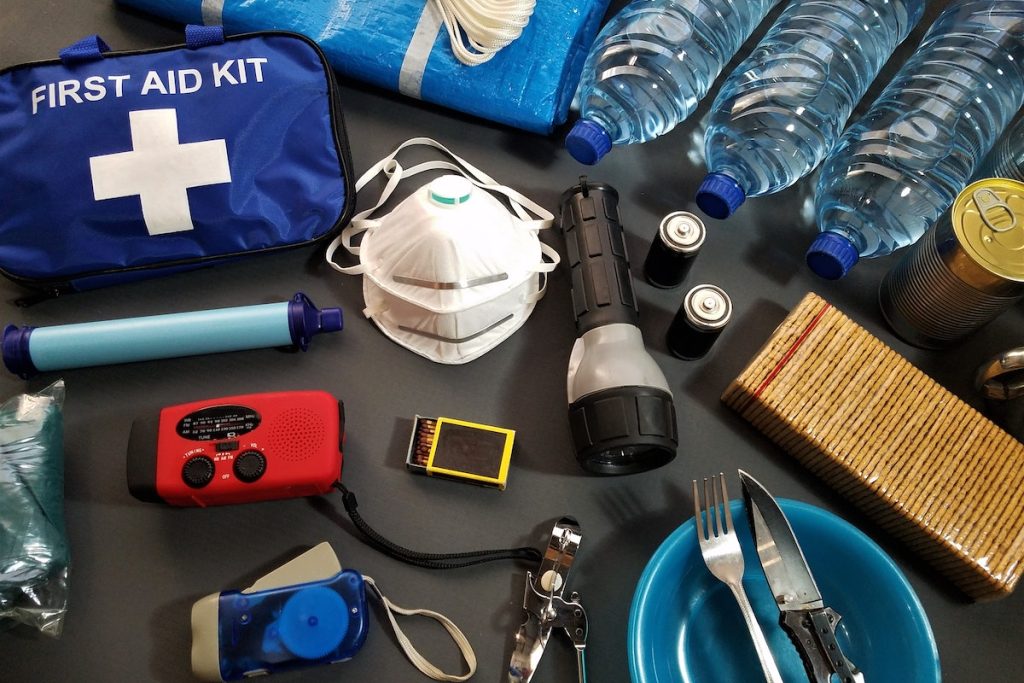• Develop a comprehensive plan for emergencies, including informing workers of potential risks and providing adequate protective gear.
• Set clear rules and protocols, provide evacuation plans, and regularly monitor weather conditions to avoid potential hazards.
• Provide access to cooling areas and warm clothing to limit their exposure to hazardous conditions.
• Offer employees the opportunity to work remotely if they can’t come to work due to the harsh weather.
Keeping workers safe while on the job is of utmost importance, regardless of the conditions. However, during harsh weather conditions such as extreme heat or cold, high winds, and storms, employers must take extra precautions to ensure the safety of their employees. Here are some key ways you can protect your workers during inclement weather.

Develop a Comprehensive Plan for Emergency Situations
Harsh weather conditions can create sudden and dangerous situations. These may cause injury or even death if not handled properly. To proactively prepare for these situations, you should develop an emergency plan that outlines safety procedures for responding to hazardous conditions. Here are things you can do:
Inform Workers of the Potential Risks
Inclement weather may pose additional dangers to workers. Make sure your employees are aware of the potential risks associated with harsh weather conditions and the necessary steps they should take to stay safe. This way, they can be better prepared to respond quickly and appropriately in an emergency.
Provide Adequate Protective Gear
Workers should be provided with protective gear that is appropriate for the environment they are working in. This includes items like hard hats, safety glasses, and gloves. Additionally, ensure your employees have access to extra clothing, such as jackets from Gore-Tex, to help protect them from the cold or wet weather. Additionally, these jackets provide additional protection from any debris or sharp objects that may be present in the work environment.
Set Clear Rules and Protocols
Outline specific rules and protocols for employees’ conduct during inclement weather conditions. For example, they should know where to go if a storm is approaching or when to take shelter. Additionally, ensure they are aware of the proper safety procedures for any equipment they use.
Provide Evacuation Plans
Part of a comprehensive plan should include evacuation protocols in the event of an emergency. Make sure your employees know where to go, who to contact for assistance, and what resources are available in case of an evacuation. This information should be clearly communicated to all workers and updated regularly.
Monitor Weather Conditions Regularly
It’s important to monitor weather conditions regularly to avoid potential hazards. You should set up alerts or notifications for when extreme conditions are expected and have a plan for how you’ll respond if needed. Here are important things you can do:
Install an Automated System
This system should provide regular updates on weather conditions and any potential hazards. It should also be able to predict environmental changes, alerting you of any dangers that could arise. This also alerts workers of environmental changes so they can adjust their safety measures accordingly.
Stay Connected with Local Authorities
It’s important to stay connected with local authorities such as the National Weather Service to receive real-time information about hazardous conditions. This way, you can respond quickly to any potential threats. Additionally, having advanced warnings can help you prepare in advance if necessary.

Train Employees on Safety Protocols
You should also train your employees on safety protocols for inclement weather conditions. A properly trained and knowledgeable workforce can help reduce accidents and increase safety. Ensure all your employees know the proper protocols for handling hazardous conditions and understand the risks associated with working in such an environment.
For Extreme Heat
Ensure workers know the signs of heat exhaustion and know the proper safety protocols for working in hot environments. Here are some signs that your employees may be experiencing heat exhaustion: nausea, dizziness, excessive sweating, and fatigue. Additionally, provide them with water breaks throughout their shift to stay hydrated and give them access to cooling areas where they can take a few minutes to cool off before continuing their work.
For Extreme Cold
Extreme cold due to winter weather can be very hazardous. Your workers may experience frostbite or hypothermia if they are not properly dressed. Ensure they wear multiple layers of warm clothing and that their feet and hands are covered with appropriate protection, like insulated boots and gloves. Additionally, provide them access to warm areas where they can take a few minutes to get out of the cold before continuing their work. If it helps, if your employees can’t come to work, then offer them the opportunity to work remotely if possible.
By following these steps, employers can help ensure their employees’ safety during inclement weather conditions and create a safe working environment for everyone. Implementing proper protocols and providing adequate protective gear will go a long way in protecting your workers from potential hazards and keeping them safe on the job.

